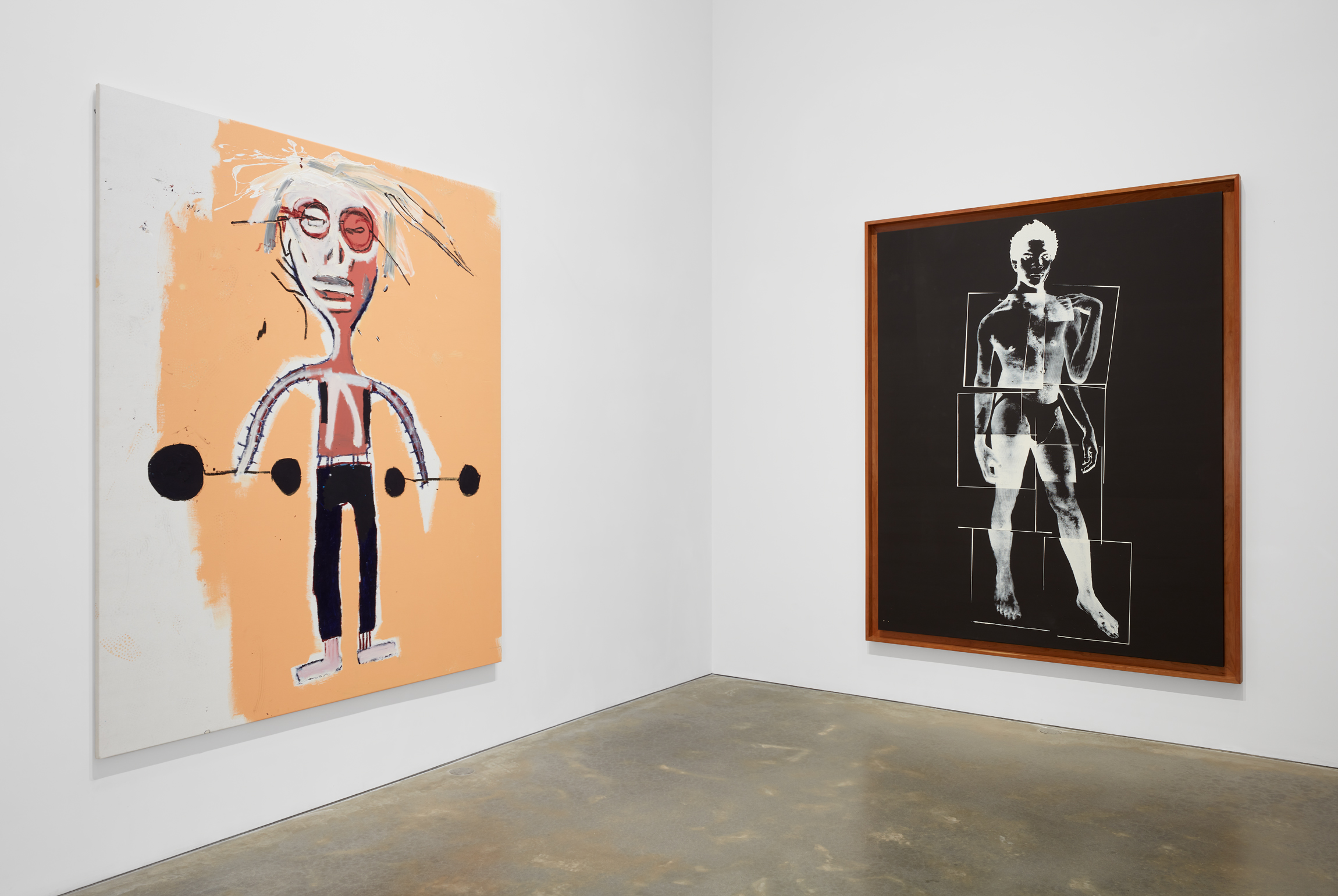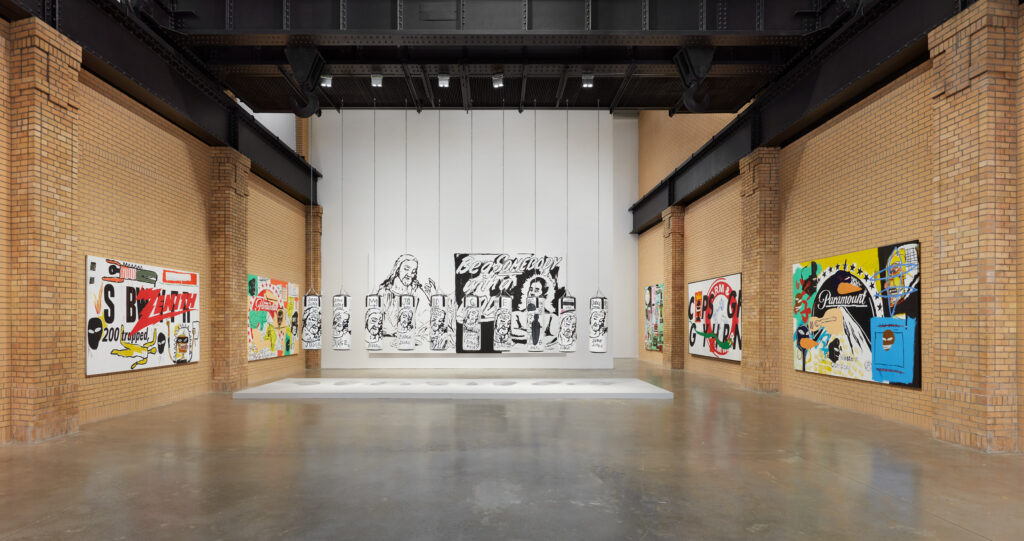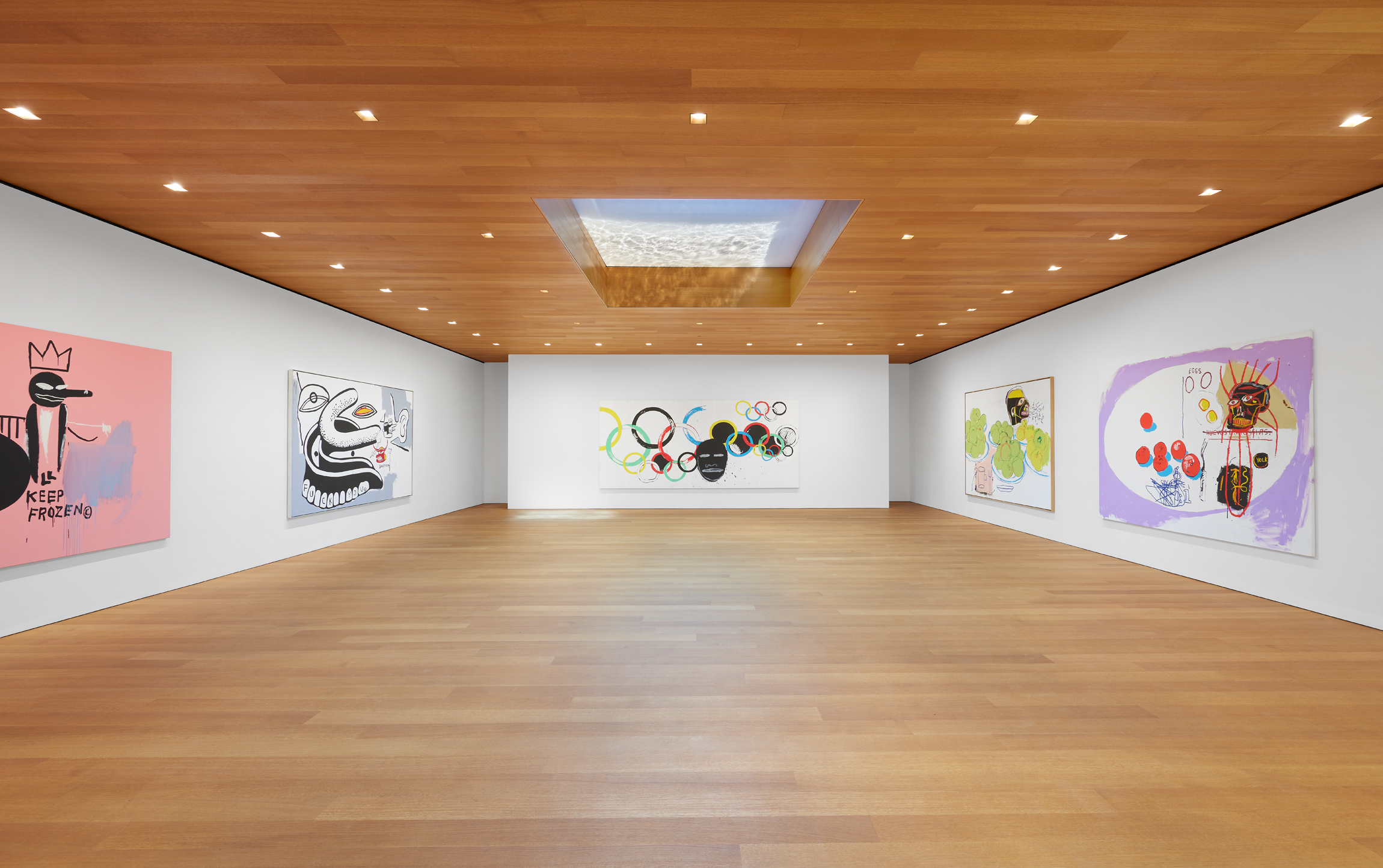
In death, it seems, two of the most important artists are closer than they had been during life. This eternal reworking of a relationship, repeated in almost Warholian fashion, has seen countless Warhol and Basquiat exhibitions launched over the last few years. Perhaps befitting of the two, the East Village being the most obvious of locations, is home to the most recent iteration “Warhol x Basquiat”. The highly anticipated exhibition has already received much more favourable reviews compared to their first joint downtown show back in 1985.
The Brant Foundation, renowned for its successful solo exhibitions featuring both artists at its East Village location in recent years, is hosting a revival of the "Basquiat x Warhol" exhibition from November 1st to January 7th.
The show, which garnered critical acclaim during its previous run at the Fondation Louis Vuitton in Paris, has been meticulously curated by Dieter Buchhart, in collaboration with Anna Karina Hofbauer. Both curators are esteemed Basquiat historians, known for their collaborative work on the 2019 book "Basquiat By Himself" and other projects.
The Paris iteration of the exhibition showcased an impressive collection of 70 collaborative canvases and over 200 related works and documents. However, it's worth noting that the Fondation Louis Vuitton boasts a gallery space of over 40,000 square feet, a stark contrast to Brant's converted power station on East 6th Street, which offers just 7,000 square feet.
The 1985 show, in contrast, featured only 16 of the countless pieces created by Warhol and Basquiat in the preceding years and was met with harsh criticism. Perhaps the most scathing review came from New York Times critic Vivien Raynor, who depicted the collaboration as a form of manipulative puppetry orchestrated by Warhol.
Raynor wrote, "LAST year, I wrote of Jean-Michel Basquiat that he had a chance of becoming a very good painter providing he didn't succumb to the forces that would make him an art world mascot. This year, it appears that those forces have prevailed, for Basquiat is now onstage at the Tony Shafrazi Gallery at 163 Mercer Street, doing a pas de deux with Andy Warhol."
"The collaboration," she continued, "looks like one of Warhol's manipulations, which increasingly seem based on the Mencken theory about nobody going broke underestimating the public's intelligence. Basquiat, meanwhile, comes across as the all too willing accessory."
Raynor's words are said to have deeply affected the young Basquiat, leading to the dissolution of his collaboration with Warhol and causing lasting damage to their friendship. However, the show did yield one iconic result: photographer Michael Halsband's famous images of the artists in boxing gloves and trunks, poised as if ready to spar.
Much has transpired since that pivotal moment, including the untimely deaths of both artists within 18 months of each other in 1986 and 1987. Today, Basquiat and Warhol are celebrated as two of the foremost artists of the late 20th century. Their individual works have fetched prices exceeding $100 million in recent years, solidifying their status as some of the most financially successful artists in history.
The nature of their relationship has been a topic of ongoing debate and speculation, even inspiring a Broadway production titled "The Collaboration," which, unfortunately, had a brief run earlier this year.
Despite their individual successes, their collaborative works have not commanded the same astronomical prices. For instance, one collaborative piece sold for $11.4 million in 2014 at Phillips, while "GE/Skull" (1984–85) fetched $4.6 million and "½ Keep Frozen" (1984–85) went for $3 million at Christie's last year.

One person who possesses intimate knowledge of their collaboration is gallerist Bruno Bischofberger, who brought the two artists together in 1982. Speaking earlier this year, Bischofberger revealed that the collaboration was driven by a shared interest in art history and a deep appreciation for each other's work, as well as a curiosity about the creative possibilities that could emerge from the collaboration of three artists with distinct personalities, styles, and approaches, all living in the same city and society as friends.
During their initial meeting at Warhol's Factory, Bischofberger captured a polaroid of Warhol and Basquiat together, and Basquiat later turned this photograph into a double portrait titled "Dos Cabezas."
In 1984, Warhol and Basquiat worked tirelessly, blending their iconic imagery: Warhol's screen-printed advertisements and cultural symbols were obscured and reimagined by Basquiat's distinctive figures and signs. Newspaper headlines, part of Warhol's repertoire, were rewritten and transformed by Basquiat. The scenes painted in Basquiat's conceptual Neo-Expressionist style seamlessly coexisted with Warhol's precise appropriations of brand logos.
"Andy would start one [painting] and put something very recognizable on it, or a product logo, and I would sort of deface it. Then I would try to get him to work some more on it, I would try to get him to do at least two things," Basquiat explained.

"I drew it first and then I painted it like Jean-Michel," added Warhol. "I think those paintings we’re doing together are better when you can’t tell who did which parts."
Buchhart, one of the curators of the upcoming exhibition, expressed the view that Warhol and Basquiat's collaboration transcended its time, echoing themes that remain relevant today, such as racism and consumerism. He called their collaboration "a unique project and probably one of the greatest and most enduring in all of art history."
Buchhart, known as one of the world's foremost Basquiat experts, has curated exhibitions of Basquiat's art at prestigious institutions like the Fondation Beyeler in Basel and the Musée d'Art Moderne de Paris. Interestingly, he has also emphasised that his own art practice is more influenced by scientific disciplines like blood cell tumours, biochemistry, genetics, and molecular biology than by individual artists.

The exhibition comprised multiple floors, each housing a variety of galleries, each with its own unique narrative while still showcasing the recurring themes present in the works of Basquiat and Warhol. Themes such as gross anatomy, logos, consumer culture, identity politics, boxing, and repetition were prevalent throughout. I was pleasantly surprised to discover the inclusion of collaborative pieces by contemporaries like Keith Haring, Futura 2000, Tseng Kwong Chi, Kenny Sharf, and Fab Five Freddie, which added depth to the exhibition.
Out of the 160 works created by Warhol and Basquiat, only half were on display at the Foundation. However, what was equally remarkable as the artwork itself was the size and layout of the galleries. The pieces were colossal, with some stretching up to 8 metres in length, and they were complemented by similarly sized canvases. Visually, the arrangement was flawless, with each piece given its own space to breathe, ensuring that none of them competed for attention. The galleries provided ample room for the art to shine individually.
Contact Andipa Editions to explore our selection of Andy Warhol prints for sale or to buy original Jean-Michael Basquiat prints.